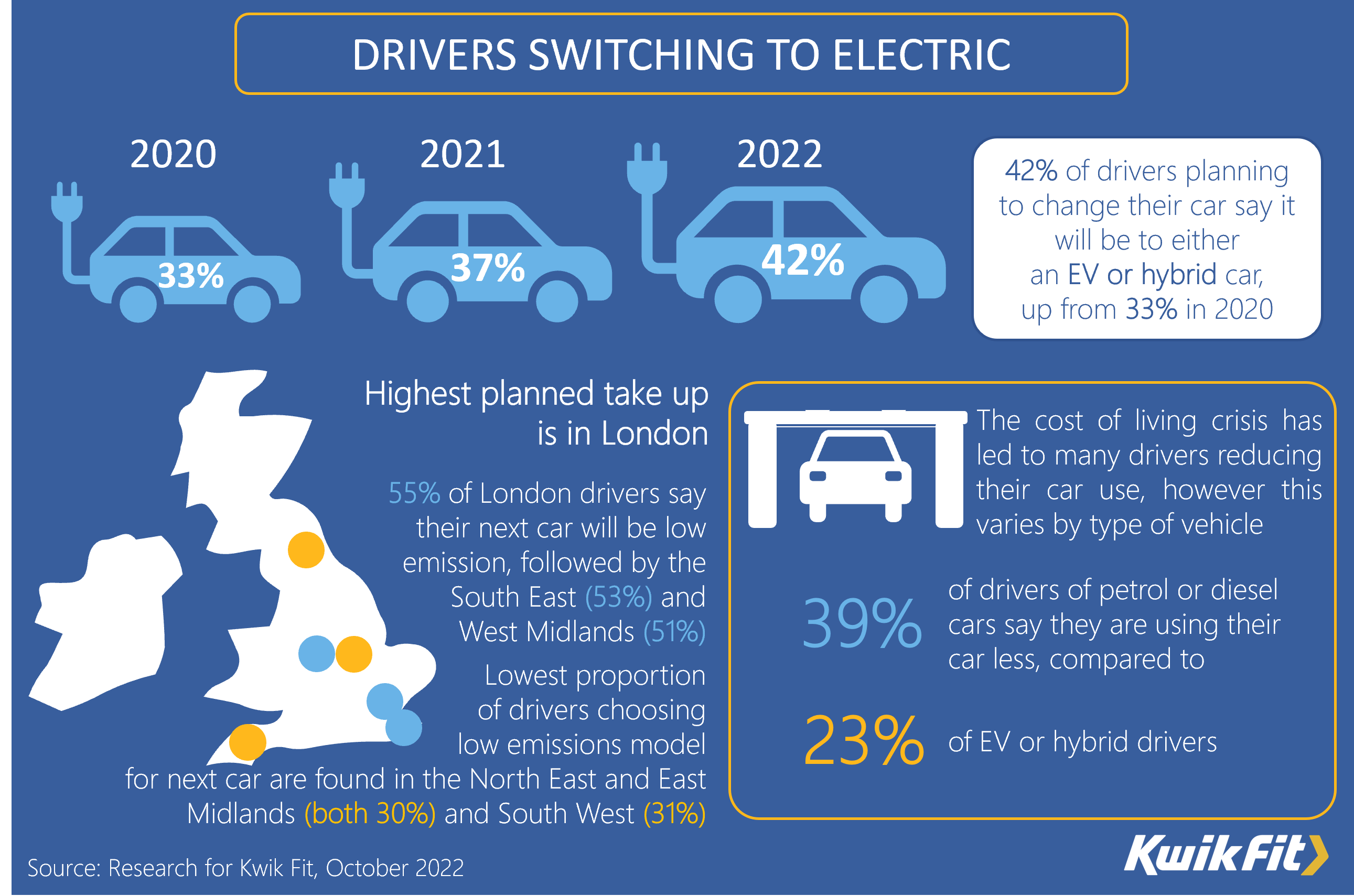
Drive to electric gathers pace
New data shows that the number of drivers planning to make the switch to electric has jumped in the last year. A study for Kwik Fit, reveals that 42% of those planning to change their car expect their next vehicle to be a low emission model – either hybrid or fully electric vehicle (EV).
This is a significant increase on a year ago, when 37% said they planned to switch to a hybrid or EV. (It was 33% in 2020.) In contrast, 34% of those planning to change their car said they will opt for a petrol or diesel (ICE – internal combustion engine) next time, with 24% saying they don’t know. The figures indicate that in the last year, approximately 800,000 additional drivers have decided that they will opt for a low emissions vehicle for their next car.
These drivers will help increase plug-in vehicle registrations from the current figure of one in five new cars in the UK. However, there are still many motorists not yet ready to make the switch and Kwik Fit’s research reveals the biggest factors putting people off. The most common reason given is the rise in electricity costs, cited by 39% of those who are not considering switching to fully electric for their next car. (The research was carried out after the Government announced its emergency energy price cap.)
After the rising cost of electricity, the reasons given most often by car owners for not switching to a full EV are the purchase cost compared to equivalent sized ICE alternatives, concerns over range on a single charge and the lack of fast charging points in the areas they commonly drive.
Young drivers and Londoners most likely to switch to EVs
Of those who are planning to change their car, younger drivers are more likely to be opting for low emissions – more than half (51%) of drivers aged 18-34 say their next car will either be a hybrid or EV, compared to 34% of those over 55. There is also gender bias – fewer women drivers (38%) say they will opt for a low emission vehicle next compared to male motorists (45%).
Cost of living having bigger impact on ICE drivers than those with EVs
The cost of living crisis has led to many drivers using their car less. However, this varies dramatically depending on the type of vehicle. Of those with an ICE car, 39% say they have decreased the use of their car, compared to the much lower figure of 23% for hybrid or EVs.
The cost of living crisis has had an impact on the motoring expenditure of more than two thirds (68%) of drivers. After using their car less (36% of all drivers), the next most common consequence is owners saying that they have delayed changing their car and are keeping it for longer than originally planned, stated by one in five drivers (19%). In good news for road safety and emissions, as well as in reducing costs, 13% of drivers say they are driving more slowly to save on fuel.
In contrast to those keeping their car for longer, almost one in ten (9%) say they have swapped their car for a more economical model. The figures indicate that many have switched to EVs or hybrids, 27% of those currently driving low emission vehicles say that switching to a more economical model was driven by the cost of living crisis.
Some 8% of drivers say they have put off servicing their car to save money, and while this will be of immediate benefit, it may be a false economy in the longer term. Regular servicing will not only help keep a car running efficiently and reduce fuel consumption, a full service history can also add to a car’s resale value.
